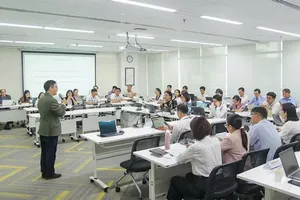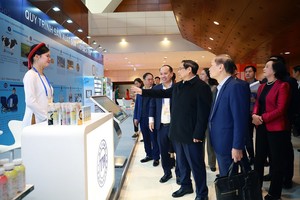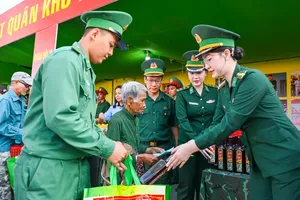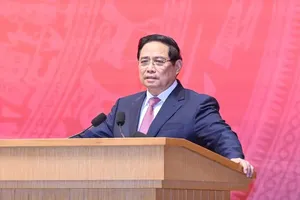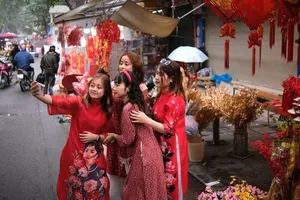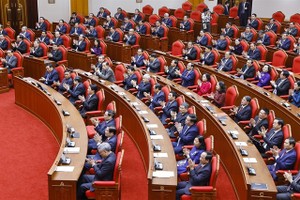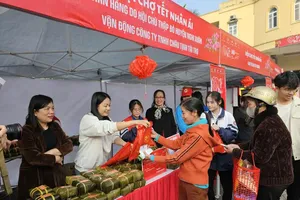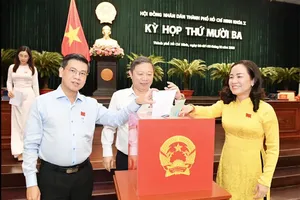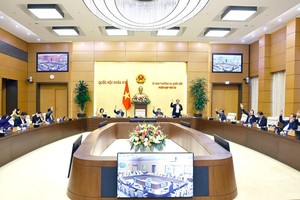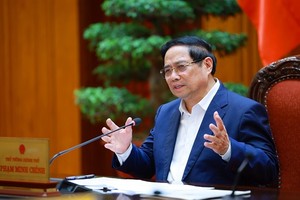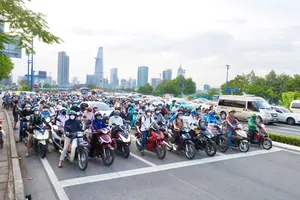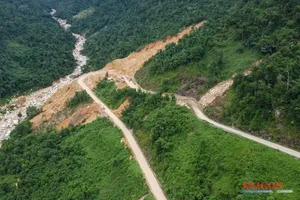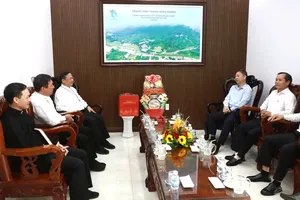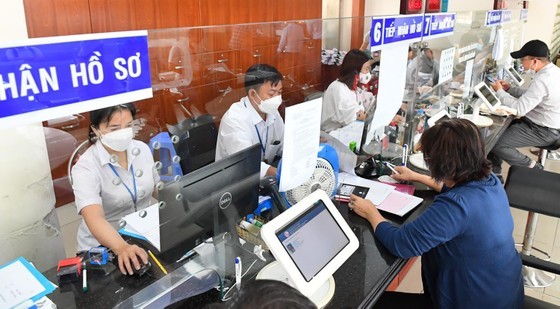 |
Residents are conducting administrative procedures in Thu Duc City (HCMC) (Photo: SGGP) |
About two years ago, it took Tran Van Huy and his family, living in Vo Thi Sau Ward (District 3, HCMC), much time to adjust their personal identification papers when the three wards of 6, 7, 8 in the district merged into Vo Thi Sau Ward. Therefore, hearing that District 3 is one of the six administrative units to be rearranged in HCMC, he sighed frustratedly.
Sharing the same concern is Tran Thu Ha from Trung Chanh Commune (Hoc Mon District, HCMC). She is worried that the administrative unit rearrangement this time will cost her much time and money when she has to adjust information on her identification papers, land-related papers, business registration certificate, and even the academic records of her children. She hoped that the local authorities could better implement IT, plus financial support to residents, in this adjustment process.
In the 2019-2021 period, HCMC merged its three districts of 2, 9, and Thu Duc into Thu Duc City and 19 wards in other districts. Even though this restructuring is quite stable now, there are still difficulties in planning, human resources designation, socio-economic growth plans, and most seriously, the operation of both businesses and citizens.
HCMC has 6 districts entitled to be rearranged:
_District 3 (with a surface area of 4.92km2 and a population of over 190,000 residents),
_District 4 (4.18km2 and about 200,000 residents),
_District 5 (4.27km2 and over 160,000 residents),
_District 10 (5.72km2 and over 240,000 residents),
_District 11 (5.14km2 and over 210,000 residents),
_Phu Nhuan District (4.6km2 and over 180,000 residents).
District 3 is on the list of administrative unit rearrangement, yet the district is reviewing its special features. Once the process happens, the number of administrative papers to be adjusted is rather huge as the district is accommodating several central agencies, hospitals, and major religious facilities.
Similarly, District 1 is now housing a large number of businesses, banks, and important state agencies. It is the working, learning, tourism destination of over 1 million people each day despite its small permanent dwellers of only 239,000. Its three wards of Ben Thanh, Co Giang, Cau Ong Lanh do not meet the population requirement of a ward; however, all these three have their own special features not to be merged. There should be an appropriate allocation of civil servants, public employees, and part-time state officials to suit the nature of the district.
In the upcoming time, the HCMC People’s Committee is going to focus on urgently handling the surplus facilities of state offices and organizations during its administrative unit rearrangement process. It is trying to support concerned dwellers and organizations to adjust their identification papers free of charge once this process takes place.
In the 2019-2021 period, Hanoi chose to rearrange only the wards in Hai Ba Trung District (merging Ngo Thi Nham Ward into Pham Dinh Ho Ward and Bui Thi Xuan Ward into Nguyen Du Ward). After this process, the state apparatus has been simpler with smaller overhead costs, while there are more chances for these wards to select capable employees for daily operations.
However, there are also complaints that with a wider surface area and denser population to manage, the same number of civil servants and public employees feel overloaded as they now have to do multi-task.
The current Government’s regulations stipulate that a ward, commune, or town can hire 23 employees at max. In Hanoi, nevertheless, the average population in each ward is 25,000 dwellers compared to the theoretical one of 15,000. Some crowded wards are even housing more than 100,000 people. Therefore, Hanoi proposed that the Ministry of Home Affairs and the Government introduce a special mechanism to increase the employee number for these dense wards.
1 district-level administrative unit (Hoan Kiem district) and 176 commune-level administrative units in Hanoi fall into the list of rearrangement. Director of the Hanoi Department of Home Affairs Tran Dinh Canh shared that to effectively implement Resolution No.97/2019/QH14 by the National Assembly on piloting the urban government model in Hanoi, the Home Affairs Ministry needs to introduce a consistent, integrated model for civil servants and public employees in all levels of the Party’s Committee, state agencies, the Vietnam Fatherland Front Committee, and other socio-political organizations in Hanoi.
Adding to that is the amendment and supplementation of Decree No.32/2021/ ND-CP by the Government to detail Resolution No.97/2019/QH14. Particularly, it is necessary to either increase the quantity of civil servants in each ward in accordance with the population and surface area of that ward or give more job benefits to state officials in crowded wards.
Hanoi also suggested that the Ministry of Home Affairs give advice on possible measures to assign staff for areas with huge workloads so that they can fulfill their tasks on time.
Chairman of the HCMC People’s Committee Phan Van Mai stated that HCMC is a dense city with heavy administrative workload. For instance, Vinh Loc A Commune in Binh Chanh District has 2,000 percent of the population standard. The permanent population in District 1 is only 239,000 dwellers, but the actual number of people to be served each day is 1 million. These have made administrative unit rearrangement much more troublesome. The city has to carefully and scientifically consider possible methods to observe the Central Government directions as well as suiting the practical demands of the city itself.
At present, HCMC is developing the best measure for the administrative unit rearrangement of 6 districts and 142 wards as requested. This measure will be submitted to the Prime Minister for approval. However, when considering the special features, only 71 wards fall into this list. A report on this matter is being prepared to ask for opinion from the Standing Committee of the municipal Party’s Committee before being submitted to the Home Affairs Ministry. It is expected that this report will then be presented in front of the Government and then the National Assembly for approval in the near future.
Assoc. Prof. Dr. Nguyen Duc Loc – Head of the Social Life Research Institute – said that when carrying out the administrative unit rearrangement process, it is essential for HCMC to consider the features of a special city or municipality. Also, this rearrangement might cause the loss of names and places associated with the historical and cultural symbols in the city.
Besides the factors of surface area and population, the culture and identity ones should also be considered. To illustrate, District 1 is linked to large department stores, District 3 to ancient villas, and District 5 to the convergence of many cultures. Without careful consideration, if the rearrangement could not achieve the desired effects, an undo would cost much money, time, and efforts of residents there.
